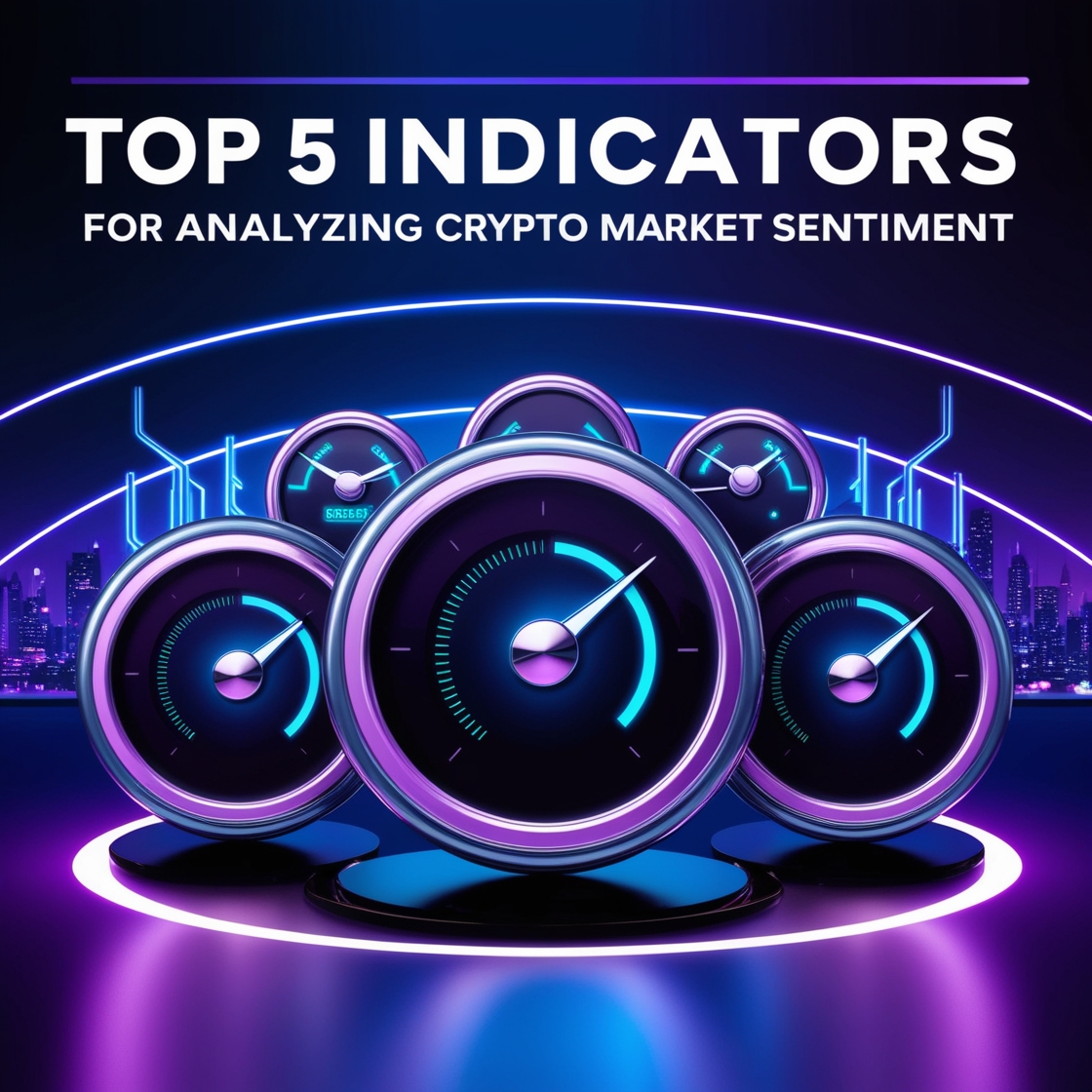Introduction
If you’re diving into the world of cryptocurrency, you’ve probably heard about the power of market sentiment. It’s what drives decisions, causes trends, and fuels the volatility we see in crypto markets daily. But how do you measure sentiment effectively? In this article, we’ll break down the top five indicators to help you analyze the pulse of the crypto market.
What is Crypto Market Sentiment?
Definition and Importance
Crypto market sentiment reflects the collective attitude or mood of investors and traders towards the market. Whether optimistic (bullish) or pessimistic (bearish), sentiment can influence market movements beyond what charts and data predict.
Sentiment vs. Fundamental and Technical Analysis
While fundamental analysis evaluates the intrinsic value of a coin and technical analysis focuses on price patterns, sentiment analysis dives into the emotions and opinions driving market activity.
Indicator 1: Social Media Activity
Role of Social Media in Crypto Sentiment
Platforms like Twitter, Reddit, and Telegram are hotspots for crypto discussions. A surge in mentions, hashtags, or trending topics can indicate growing interest or concern about a specific cryptocurrency.
Tools to Track Social Media Sentiment
Tools such as LunarCrush and CryptoMood aggregate data from social media to gauge sentiment. These platforms use AI to analyze the tone and volume of conversations.
Indicator 2: Fear and Greed Index
Understanding the Fear and Greed Index
This indicator captures the emotional behavior of the market. A score closer to 0 indicates fear, while a score near 100 signals greed. Extreme fear often precedes buying opportunities, while excessive greed might hint at overbought conditions.
How to Interpret It for Market Trends
Tracking this index can help you decide whether to buy, hold, or sell, aligning your actions with the broader market mood.
Indicator 3: On-Chain Data Analysis
Key Metrics Like Wallet Activity and Transactions
Analyzing wallet addresses, transaction volumes, and exchange inflows or outflows provides insights into real-time investor behavior. High activity often signals increased market engagement.
Tools for On-Chain Analysis
Platforms like Glassnode and Santiment offer detailed on-chain metrics, helping traders interpret the data for sentiment analysis.
Indicator 4: News Sentiment Analysis
Impact of News on Market Sentiment
Positive news about adoption or partnerships can pump prices, while regulatory crackdowns can lead to sharp declines. Keeping an eye on breaking news is crucial.
Filtering Reliable News Sources
Use reputable sources like CoinDesk and CoinTelegraph, and consider sentiment analysis tools that aggregate news impact, such as CryptoPanic.
Indicator 5: Trading Volume and Volatility
Why Volume and Volatility Are Crucial
Volume reflects the level of interest in a cryptocurrency. High trading volumes often accompany strong price movements, while volatility indicates the level of uncertainty or risk.
Identifying Trends Using Volume Data
Pair volume analysis with price action to identify bullish or bearish trends. For example, rising prices on high volume indicate strength, while declining prices on low volume suggest weakness.
How to Combine Indicators for a Holistic View
Strategies for Cross-Validating Sentiment Data
No single indicator provides a complete picture. Combine tools like the Fear and Greed Index with on-chain data and social media trends to form a well-rounded perspective.
Avoiding Pitfalls in Sentiment Analysis
Don’t let hype or fear cloud your judgment. Always corroborate sentiment data with technical and fundamental analysis.
Benefits of Monitoring Crypto Market Sentiment
Enhancing Decision-Making
Sentiment analysis can help you identify entry and exit points, reducing emotional decision-making.
Identifying Potential Market Reversals
Shifts in sentiment often precede major market reversals, allowing savvy traders to act early.
Challenges in Analyzing Market Sentiment
Misinformation and Noise in the Market
Crypto markets are notorious for misinformation, making it essential to verify data before acting on sentiment.
Overreliance on Sentiment Indicators
While sentiment analysis is powerful, relying on it exclusively can lead to misjudged trades. Balance is key.
Conclusion
Analyzing crypto market sentiment can give you a competitive edge, helping you navigate the volatile world of cryptocurrencies with confidence. By leveraging tools like social media trackers, the Fear and Greed Index, and on-chain data, you can stay one step ahead of market trends.
FAQs
1. What is the best way to track crypto market sentiment?
Use a combination of tools like LunarCrush, Glassnode, and the Fear and Greed Index for a holistic view.
2. Are sentiment indicators reliable for trading decisions?
They’re helpful but should be combined with technical and fundamental analysis for accuracy.
3. Can beginners use sentiment analysis effectively?
Yes, but start with simple tools like the Fear and Greed Index to get a feel for market mood.
4. What is the role of AI in crypto sentiment analysis?
AI streamlines data collection and analysis, providing real-time insights from social media, news, and on-chain data.
5. How often should I check market sentiment indicators?
Check them daily or weekly, depending on your trading style and the market’s volatility.
